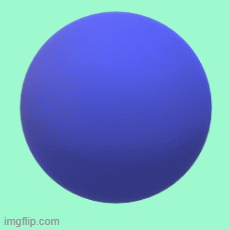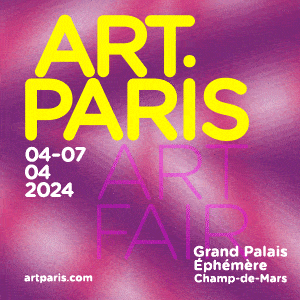Whitehot Magazine
April 2024
"The Best Art In The World"
"The Best Art In The World"
April 2024
Artists Explore Screen Space @ The Power Plant

Ryan Trecartin at the Power Plant
Ryan Trecartin, Any Ever, 2010 (Installation view)
Photo: Kyra Kordoski
Artists Explore Screen Space: Ryan Trecartin; Peter Campus; Joachim Koester; Sharon Lockhart
The Power Plant
231 Queens Quay West
Toronto, ON, M5J 2G8
26 March through 24 May, 2010
Artists Explore Screen Space is a showstopper. Exhibiting Ryan Trecartin, one of the youngest, biggest names going right now, with Peter Campus, one of the most established in on-screen work, would be a solid curatorial basis in and of itself. The inclusion of Joachim Koester and Sharon Lockhart adds conceptual depth and expands the show's perspective beyond a binarised comparison. Presented as part of the 23rd Images Festival, Screen Space is set up as four solo exhibitions, but they relate to each other exceptionally well. Showing four artists allows for a balanced aesthetic dialogue and the project makes good use of the The Power Plant's structure. Each installation has enough space to envelope the viewer in a distinct micro-environment and enough formal and theoretical strength to hold its own in this formidable company. I was fortunate enough to be passing through Toronto at the right time, and in addition to seeing the show I was able to catch a few words with the artists at the opening (with the unfortunate exception of Sharon Lockhart, who wasn't in the city yet.)

Ryan Trecartin, K-Corea INC. K (Section A), 2009.
HD Video, Duration 31 minutes, 20 seconds
Courtesy the artist and Elizabeth Dee, New York.
Viewing Any Ever, Ryan Trecartin's installation of seven works - his new four part series, Re’Search Wait’S (2010) and Trill-ogy Comp (2009) - is like getting lost in a small universe of distinct, hyperactive planets. Wandering through interconnected rooms designed almost like sets (the unique seating in each relates to the content of the video shown) it's easy to become absorbed in the immediate environment. And, as to be expected with Trecartin's work, this disorientation manifests on a subjective level as well - but it would actually be less disorienting if it were more abstract. Much of the power in Trecartin's aesthetic is drawn from explosively familiarity. In his videos, the visual languages of commercials, sitcoms, infomercials, pop-up ads, product placement, reality tv, horror films, surveillance, music videos, gaming and the internet at large flash past in accelerated fragments. The speed with which he mixes these references may seem overwhelming, but one can imagine it's not too far off the way our subconscious is forced to process all the sensory 'noise' associated with our daily channel surfing, web browsing, magazine flipping and social media engagement. It resonates deeply with a culture that is defined by mashing-up, remixing, retweeting, appropriating, collaboration and open source propelled by high-performance applications and high-speed connections.
His characters, too, shift. They change their roles and relationships with a fractured rapidity that would seem to bely the strident, often aggressive manner with which they proclaim them. The fluctuating world he sets them in, so disconcertingly reminiscent of our own, seems to offer very little space for subjective stability. With hyper-coloured hair, skin, and clothes, negligible concern for defined gender or age, impulsive, frantic gestures and digitally heightened voices, they throw themselves into each self-manifestation, no matter how grotesque or awkward, with huge confidence. "Wouldn't it great if no one ever got embarrassed?" Trecartin observed. When asked about the aggression often associated with their interactions and monologues, he explained, "I think we're on the verge of a huge transformation. It's difficult, but I see it as a really positive thing. Kids growing up today are amazing. They won't talk about this art the way we would, they'll just be like 'whatever.' They absorb everything from their environment.' Exaggerated corporate-ese, social groupings that obliquely function as companies (and vice versa) and pervasive faux-product placement is present throughout Trill-ogy Comp. But an emphasis on corporate saturation is tightened and focussed in Re'Search Wait'S, where Trecartin explores the mining of behavioural data for profit. In this respect his work is something of a No Logo for a new generation, except that instead of a call to action it is a self-aware participant in a massively complex process that, from the artist's perspective, is generating an entirely new consciousness.

Peter Campus, Anamnesis, 1974.
Courtesy the artist and Albion Gallery, London.
Peter Campus's Reflections and Inflections comprises two works that have a strong relationship to their gallery space: Anamnesis (1974) and Inflections: change in light and color around Ponquogue Bay (2009). Viewing his work with Trecatin's, it is easy to fall into the obvious binary of avant garde vs. old guard. There is value in this. The opportunity to see Anamnesis, one of the pioneer video works, in the context of both Campus's personal career trajectory, as well as the overarching trajectory of an entire genre of work that he helped establish, is unique and not to be underestimated. But it is a simplified perspective; the artists' works are not as disparate as they might seem. And they do seem disparate. In contrast to Trecartin's, Campus's videos evoke a tremendous sense of serenity. Anamnesis records viewers and plays back their image with a time delay that doubles it. A large screen is on the far wall of a darkened room, and as he approaches, the viewer is bathed in a single, decentralised ray of light, and becomes the subject. The black and white footage is minimal, highly contrasted and softly rendered. The time delay imposes a somnambulistic fluidity on the motion. But there is also destabilisation of personal identity here. At each movement, multiple versions of self are created; they act with reference to you, but in accordance to their own distinct time. If you stop moving, the doubled image settles gently back into one, momentarily contrasting a fractured vision of identity to one that is stable and familiar. The representational dissonance is strange, but not overly uncanny in the full, Freudian sense of the word - it more provides a quiet meditation on the possibility that we do not always (or ever?) exist as singular and inviolably defined psychological entities.
Inflections... takes the calm to an entirely new level. A suite of six screens are set in a small, narrow room. The space is intimate, well-balanced and comforting - a modernist, non-denominational chapel of sorts. Campus has employed advanced digital technology to alter footage of Ponquogue Bay. The landscape is abstracted into intense blocks of saturated colour that fluctuate slowly, almost imperceptibly, reflecting the titular shifts of colour and light. Nature becomes, paradoxically, an eternalised concept that remains reactive to the flow of time. There is no subjective struggling here. "I'm trying to offer a way out," says Campus. In this sense he is addressing a similar awareness of psychological agitation that Trecartin is. Campus was born in 1937, though, on the eve of the second world war, and his sense of cultural dissonance stretches back through several decades. "Since the wars there has been deep-seated confusion and angst. People have grappled in different ways with how to make sense of life." Whether or not we are currently in a state of pyscho-social discontent that is more intense than any previous era, Campus offers a solution that, rather than rejecting the technological revolution many blame for a growing sense of disconnect, employs some of it's most sophisticated capabilities to reveal elemental aspects of nature. He reveals a world that radiates with a degree of peace that may well be taken as spiritual. "I think I am showing a truth," he says simply.

Joachim Koester, Tarantism, 2007.
Black and white 16mm film, 7 min. loop.
Courtesy the artist and Jan Mot, Brussels.

Sharon Lockhart, Podwórka, 2009.
Fixed camera, single-channel video projection.
Courtesy Gladstone Gallery, New York
Continuing with liminal themes, Sharon Lockhart is known for work that approaches the edges of anthropology and documentary, while remaining definitively within a fine art practice. Her latest piece, Podwórka, took her to Poland where she filmed children playing in six relatively desolate courtyards. ('Podwórka' translates loosely to 'yards'.) The film is projected onto a large, free-standing wall. It fills the surface completely and precisely; viewers sit across in front of an architectural volume of equal height and width. This creates an intimate, concise spatial frame for the viewing experience, and there is a difference, somehow, in watching figures appear from and disappear off of the sharp edges of a three-dimensional form as opposed to a flat, embedded screen. A beautiful stillness is imparted both by her signature fixed camera position and the imposing scale of the motionless wall, and this exits simultaneously with the kinetic energy generated by the uninhibited activity of the children. Their behaviour is completely natural, and yet it is almost difficult to imagine that it has not been scripted simply because Lockhart's eye for formal aesthetic relationships is impeccable. The installation conflates screen, photography and sculpture - the moving image, the still image and three-dimensional sculptural form.
As adult viewers we can't help but feel the international socio-economic disparity depicted: rather than play involving jungle gyms and super soakers, the children in Podwórka scamper over dilapidated concrete structures. Maybe in a few years they will feel the full force of inequalities and corporate influence. Maybe they already do. But if so, this is beyond the scope of the lens. In this sense, the fixed position of Lockhart's camera effects not only geographic cropping but powerful emotional and social editing. These edges are emphasised by the structural nature of the installation, and by making us keenly aware of the borders associated with observation, be it anthropological, documentary, or artistic, she is also providing an important critique of the 'information' it provides.
With respect to the show overall, the following observation struck me: Ryan Trecartin, the youngest artist, has presented a body of work that is fully engaged in revolutionary throes of psychological fracture. Joachim Koester, at mid-career, has shown a piece that in absorbed in the therapeutic processing of psychological angst, and Peter Campus, at the most mature stages of his career, relatively speaking, has created a work that speaks to having moved beyond psychological struggle. Sharon Lockhart's piece could, albeit somewhat tenuously, fit into this spectrum as reflection of the pre-angst of childhood. Again, this particular meditation on human development is not intended to reduce the value and resonances of the installations to one radically simplified narrative; it is more an emphasis of the vast imaginative space opened up by this intelligent, thoughtfully selected, well executed body of work.
Photos from the March 27th opening.
Credit: Kyra Kordoski

Joachim Koester (left) and Peter Campus (right)

Ryan Trecartin

Joachim Koester

Elizabeth Dee















